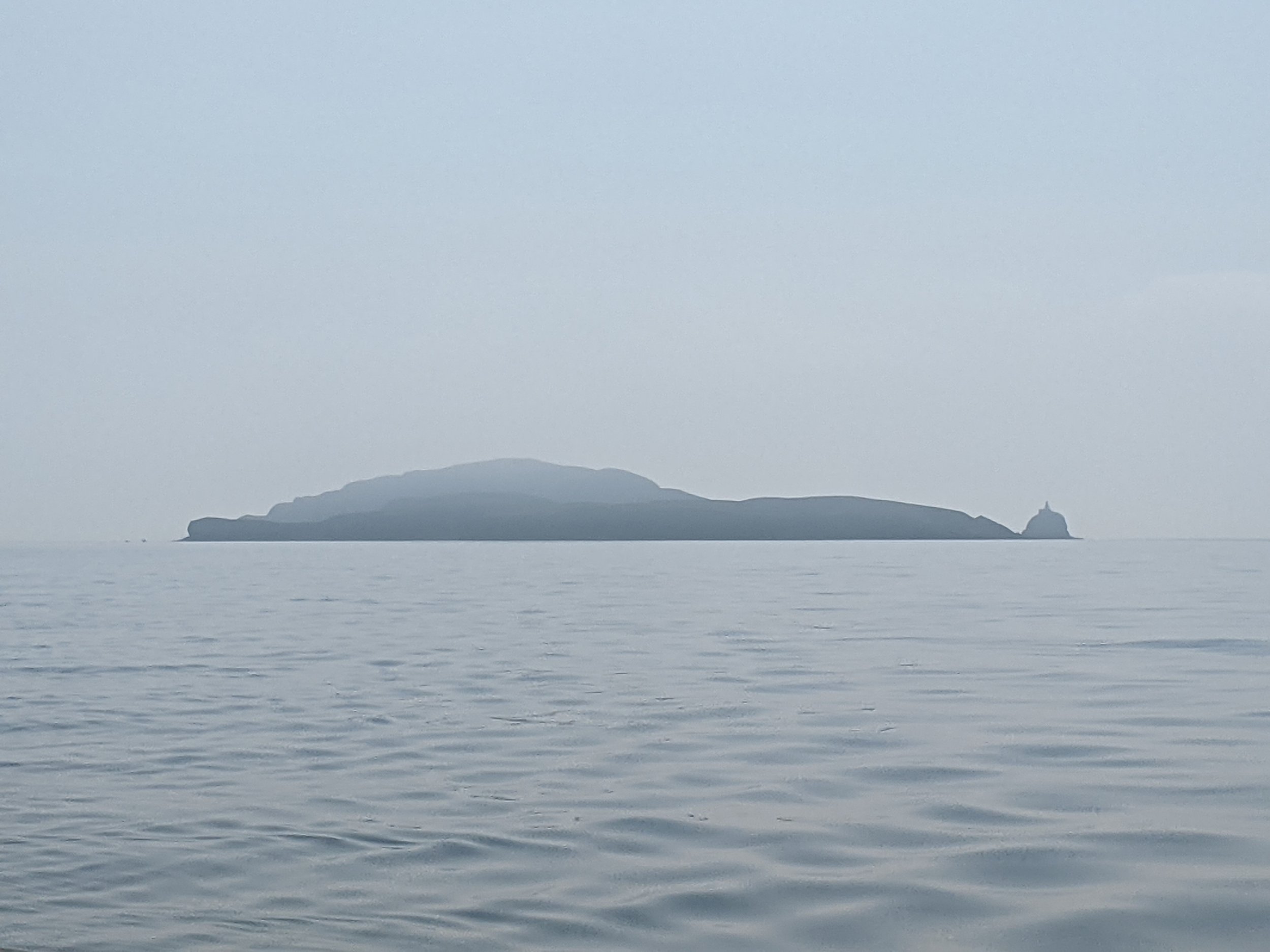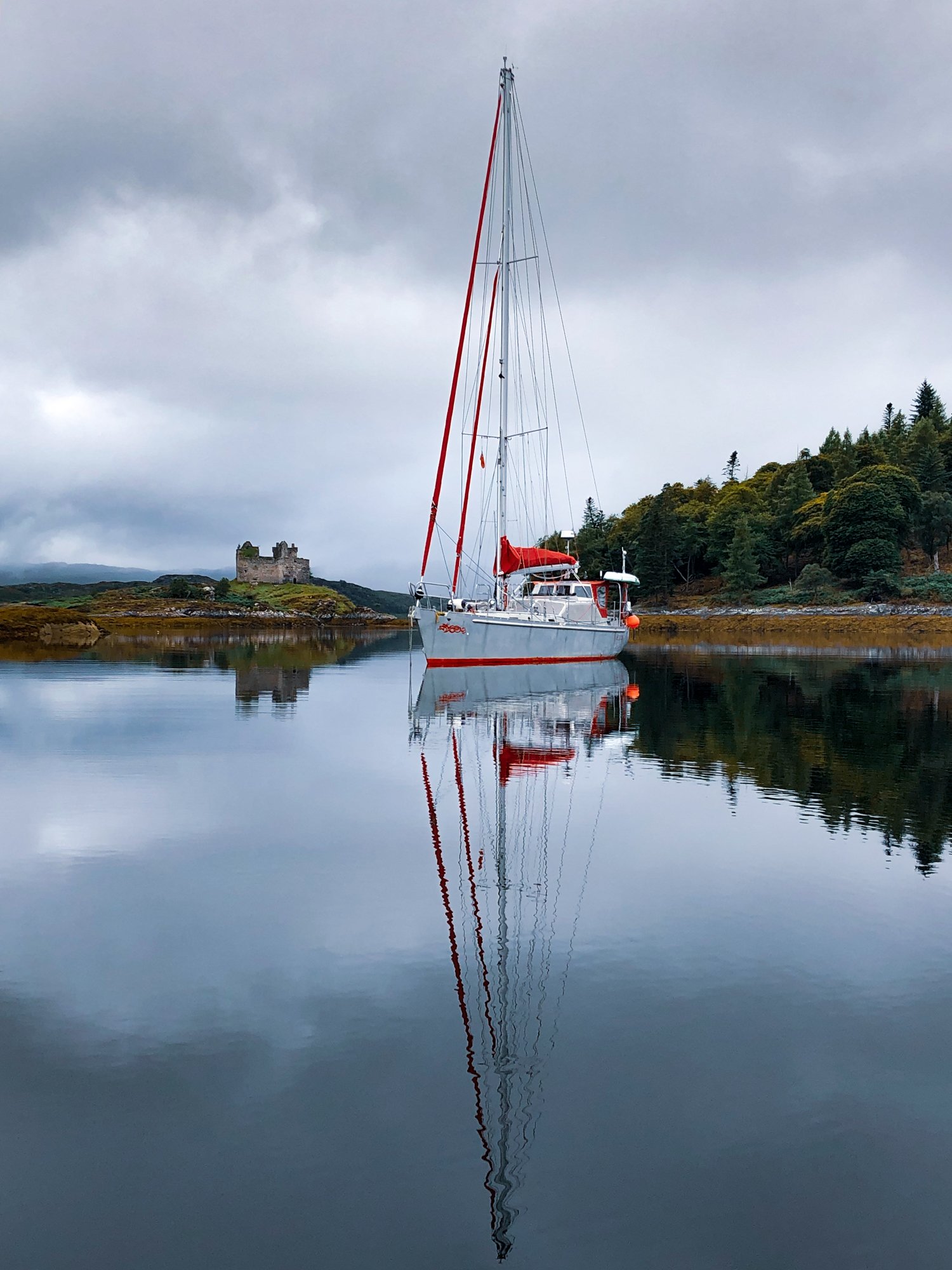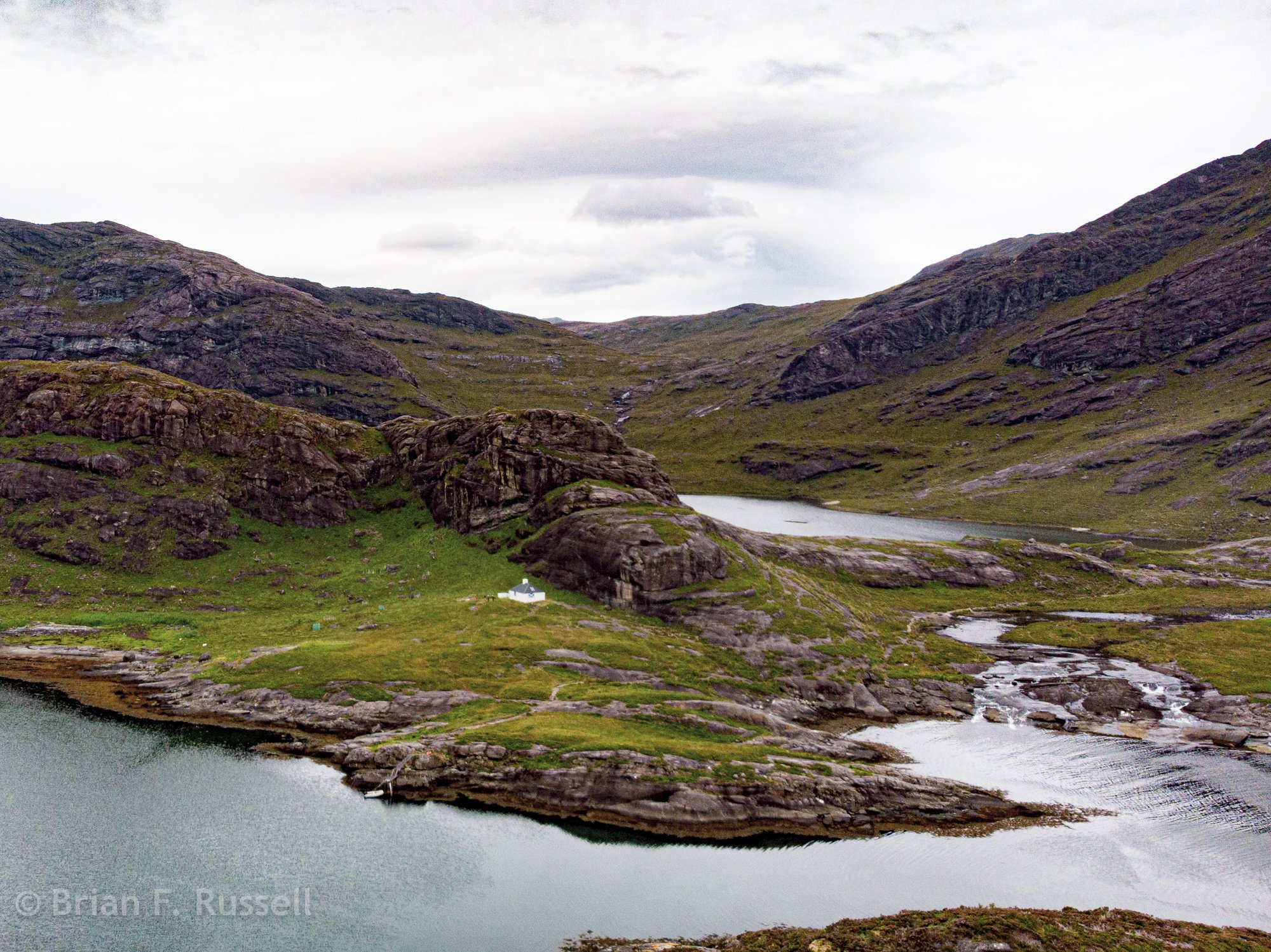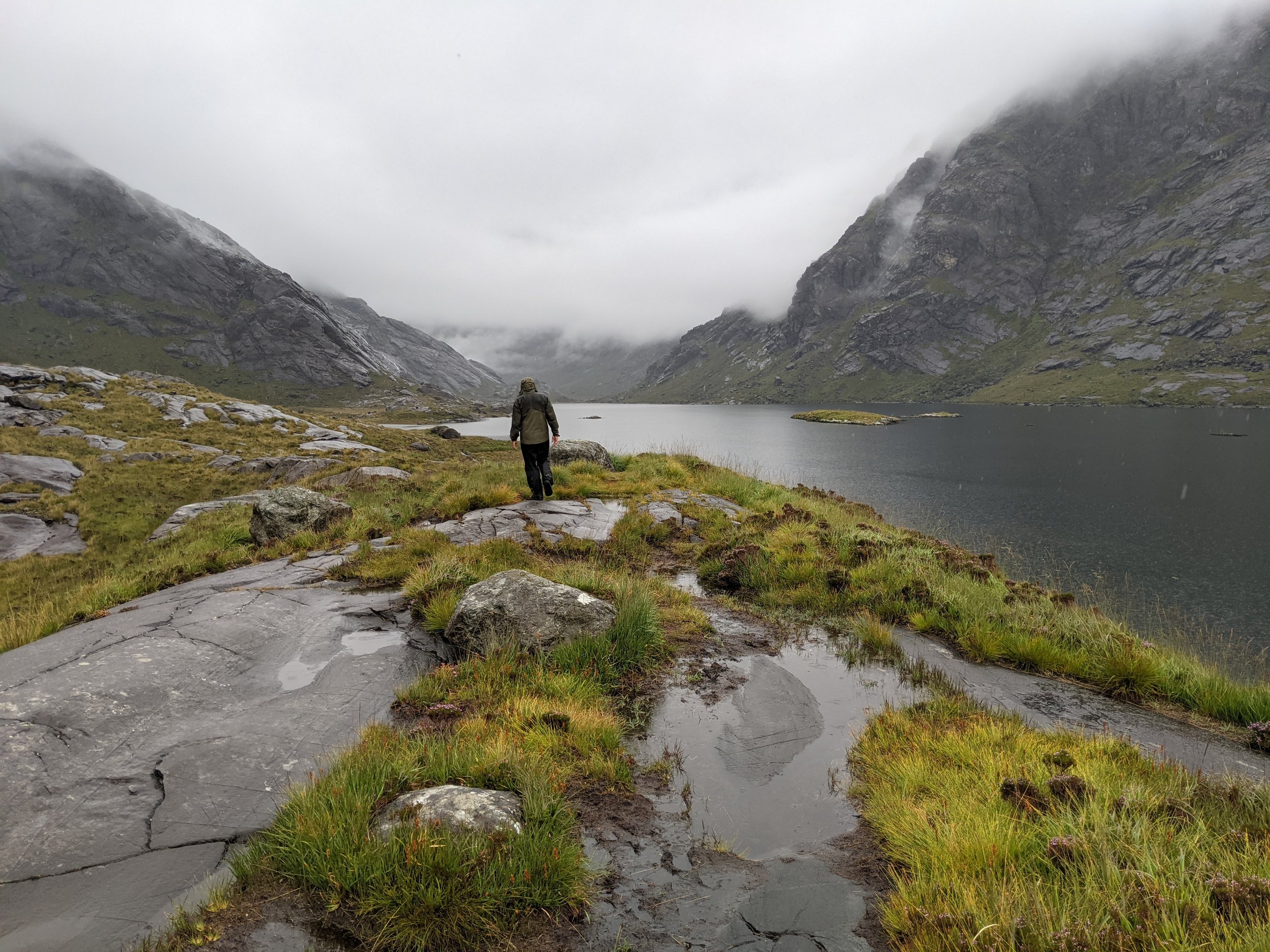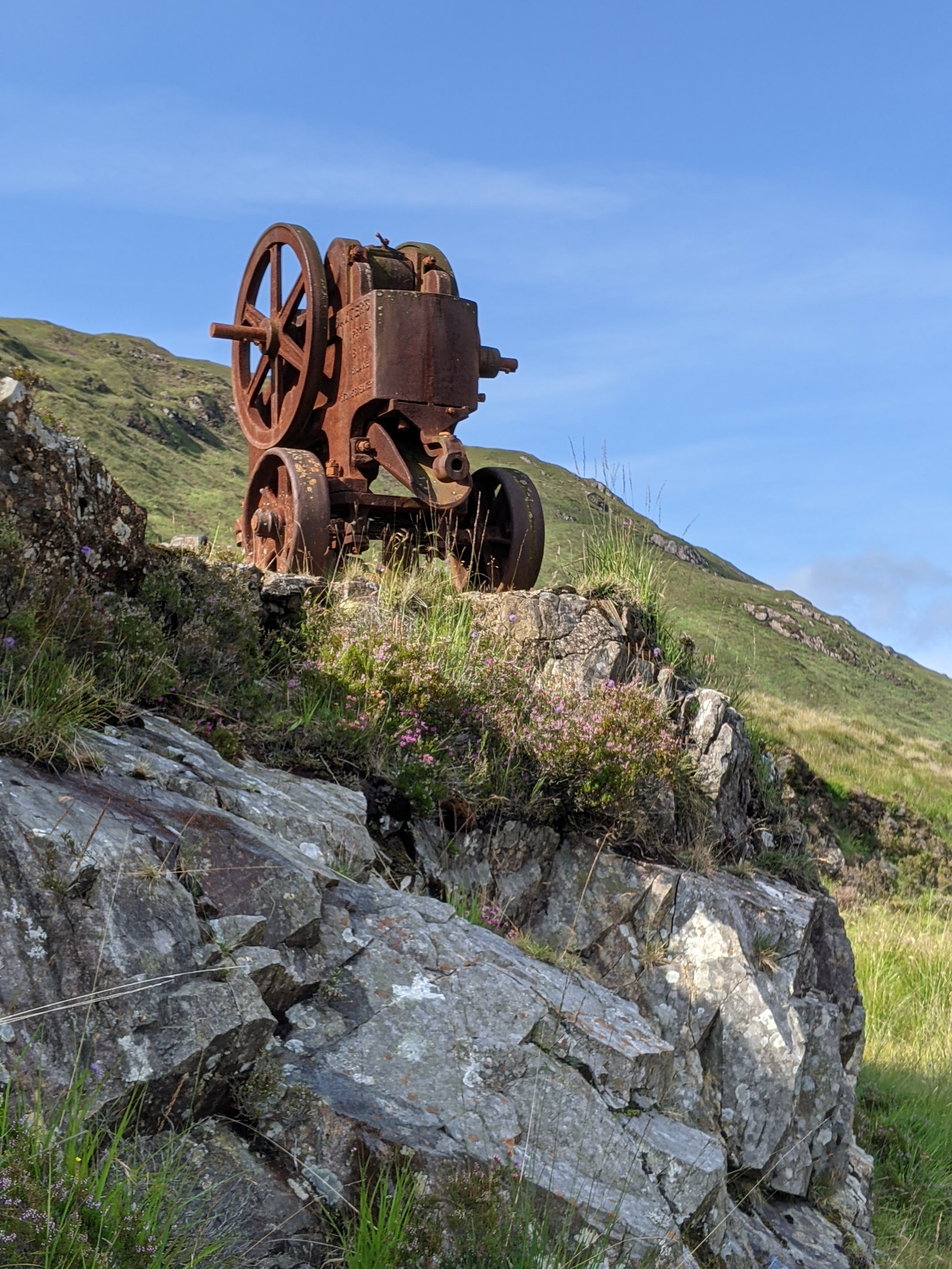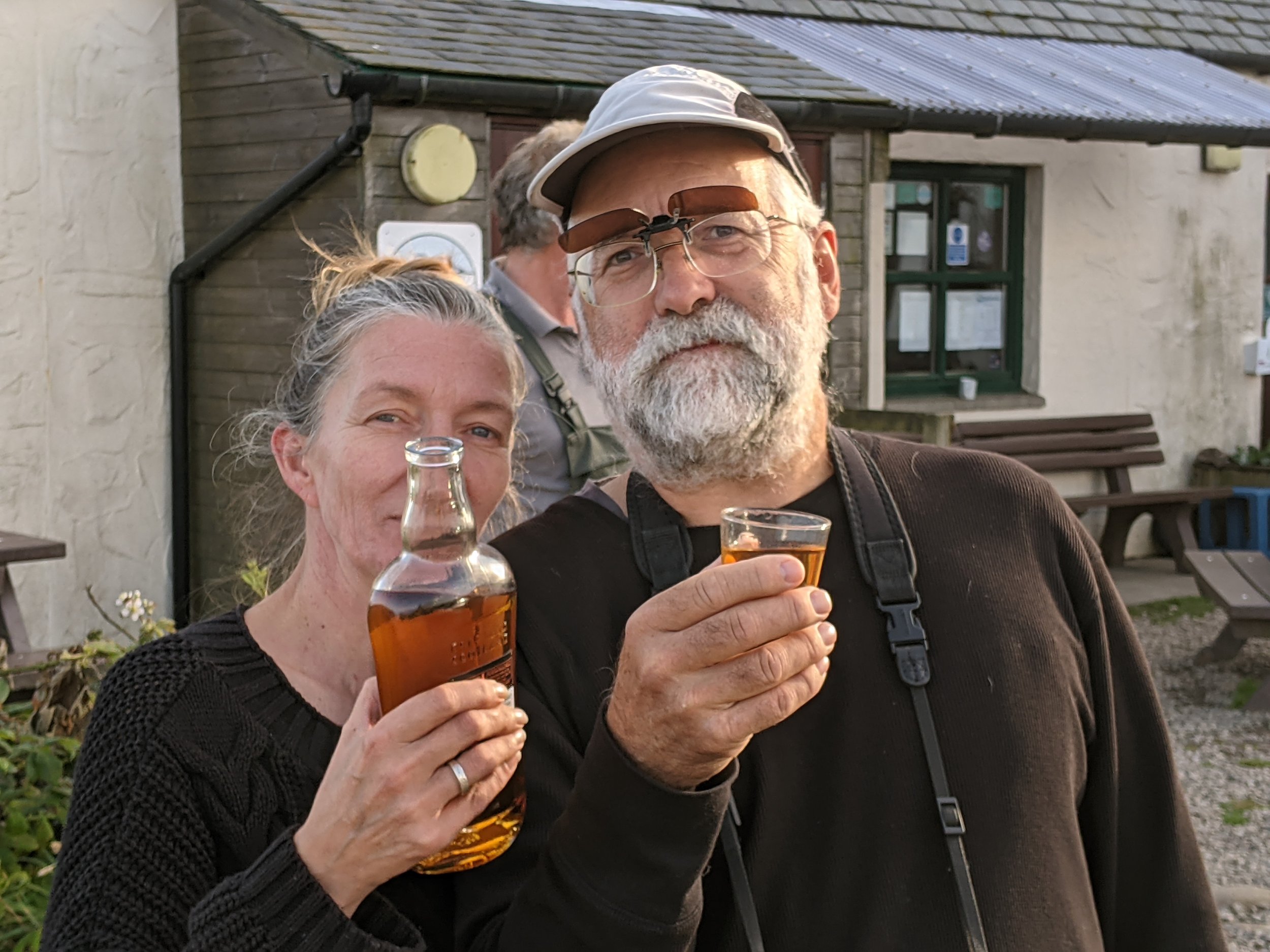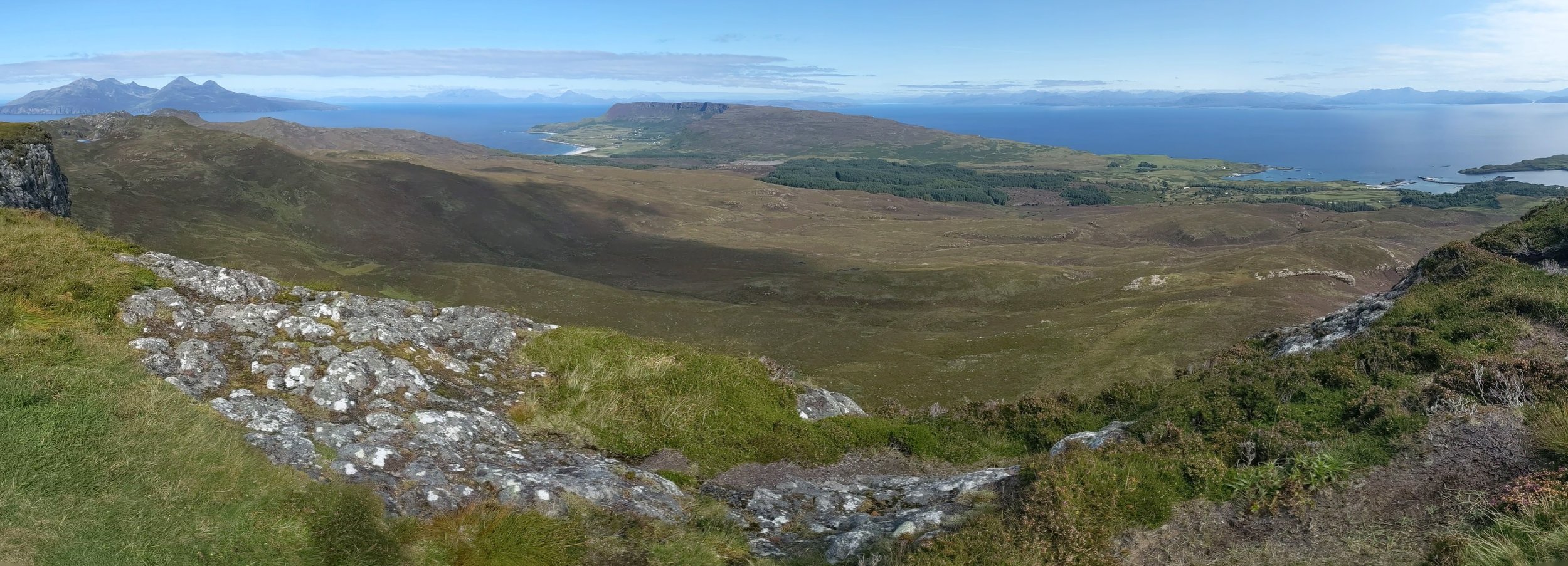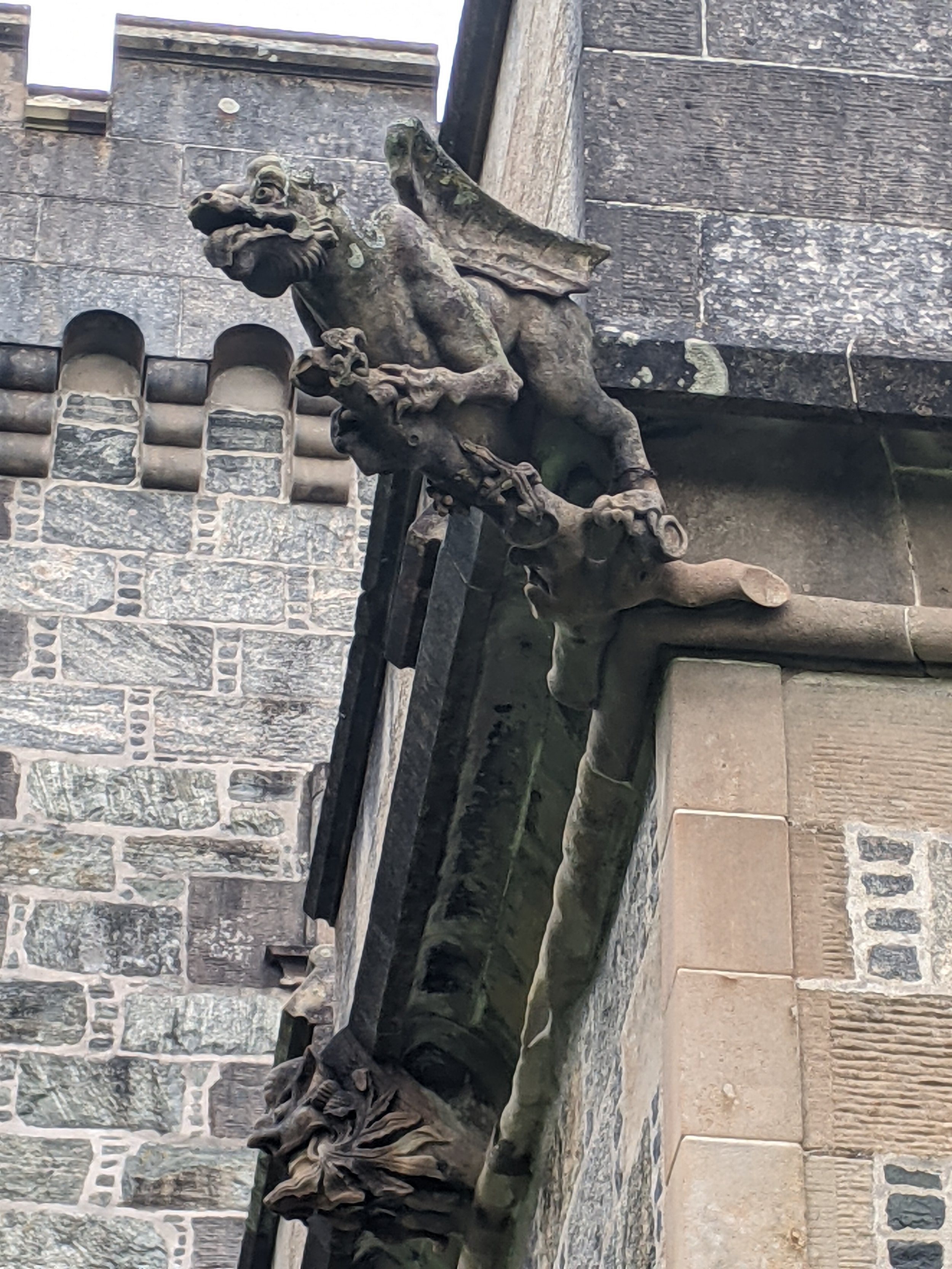Favorite anchorages of Scotland
We spent the summer of 2021 then May and August of 2022 sailing the west coast of Scotland. We had not posted much of the 2021 trip as this blog was on hold for a while. I would like to catch up with some of our favorite spots, just for the photographic record.
Sanda: Just off the tip of the Mull of Kintyre, only a fairweather anchorge, fortunately we had the calmest of all days.
Sanda
Gigha: Ardminish Bay, Gigha is known for the Rhododendron collection at Achamore Gardens and the halibut at the local restaurant. Unfortunately we missed out on the halibut as we arrived too late and there was no room for us. The gardens were very pleasant though.
Ardminish Bay
Islay: Anchored off the Lagavulin and Ardbeg distilleries on the south coast of Islay. A fantastic walk to explore the early christian Kildalton Chapel and the Celtic Cross. Then an instructive tasting at the Ardbeg distillery.
Lagavulin Distillery
Oronsay: This small island is connected to the larger Colonsay at low tide. Here we learnt the trick to mackerel jigging from a friendly fisherman, we were also gifted mackerel and crab to keep us going. We walked across the causeway to Colonsay and visited the Oronsay priory.
Anchorage off Oronsay.
Jura, Loch Tarbert: This well protected loch has a tortuous entry with very high tidal streams, made accessible only at the turn of high tide. The area is famous for the raised stone beaches, remnants of the retreating glaciers during the Ice Age.
Raised stone beach, Loch Tarbert, Jura.
Gometra: The anchorage is actually in the channel between Gometra and Ulva, which dries out at low tide. There is a one track bridge connecting the two, suitable only for hikers and all terrain vehicles. The Gometra gallery was a wonderful surprise and we bought our favorite Scottish souvenir there, a set of Gometra stamps. A hike around and over the island, surprising deer in the bracken was a highlight of our Scottish summer.
Anchorage between Ulva and Gometra.
Anchorage from Gometra.
View from the top of Gometra.
Lunga: The calm weather permitted an overnight stop here. The island just northwest of Staffa is known for the large puffin colony that nests here. The puffins had left the burrows but we caught some rafting at sea. We were also delighted by the evening serenade of seals singing to us. A special place.
Puffins at Lunga.
Kerrera: The main town of Oban and the island of Kerrera across the sound, are two of our favorite spots on the west coast. We spent many days in this area, hiking around Kerrera and visiting Gylen castle. The marina on Kerrera was friendly and the restaurant very good. The views from the hill across the sound to Mull were hard to improve on.
Gylen castle, south end of Kerrera.
Oban is a bustling town, it was a good place to provision and the Green Shack served the best sea food.
Oban at sunset.
Loch Aline: We were in a number of anchorages around Mull and the nearby lochs, one we enjoyed was at the head of Loch Aline with the Ardtornish estate and archimedes screw turbine to explore. It was here we were reminded to check the tides more closely when going ashore. Fortunately we had Charlie with us to rescue the dinghy.
Boathouse at the head of Loch Aline.
Loch Moidart: North of Ardnamurchan Point there are more dramatic and less visited anchorages. We sailed in the company of Charlie and Chris on Stomper for a few days, The first we visited was Loch Moidart with Castle Tioram, an iconic castle on an island.
Helacious anchored off Castle Tioram.
We pulled out the drone and took some shots. The walk around the inlet was nice and the spotting of sea eagles made our day.
Loch Scavaig, Skye: One of the most dramatic anchorages on the west coast of Scotland is on the south coast of Skye surrounded by the peaks of the Cuillins. The nearly enclosed bay is the home of the Coruisk Memorial Hut, a bothy or climbing hut belonging to JMCS which we were tasked to photograph. The freshwater loch, Loch Coruisk lies just inland, separated from the ocean by a short spillway.
Helacious anchored in Loch Scavaig, Skye
The Small Isles: There are four islands between Ardnamurchan and Skye which we visited in August 2021. The weather was perfect and we enjoyed exploring them with Justine and Philip. Even though they are all so close it was surprising how each had their own character and vibe.
Rum: This is the largest of the Small Isles it is quite mountainous and is the home of a large herd of red tailed deer which have been in the longest continuously run survey since 1970’s. At the head of the anchorage at Loch Scresort is Kinloch castle, an Edwardian mansion built by crazy textile tycoon, George Bullough as a summer residence.
Kinloch Castle, now it is closed but was a happening place in its day.
We take a walk to the northern shore and find the herd of deer, and also suprise a deer watcher. We take the boat over to the northern anchorage and enjoy watching the deer from the boat for a couple of days.
Eigg: the most easterly and second largest of the Small Isles, Eigg has a very recognizable profile with the Sgurr of Eigg rising above the anchorage. Eigg is owned by a collective of the residents. It is self sufficient using wind and solar power exclusively.
Sgurr of Eigg.
We meet a few of the local characters and take a soggy walk across the island to the Singing Sands beach. We discover the delight of smoked mackerel and immediately go fishing to provide supplies to make our own.
We hike to the top of the Sgurr and enjoy the panoramic views.
Looking north toward Rum and Skye, below the wind trimmed trees and view of the anchorage.
Muck: What a strange name for an Island, this turned out to be our favorite of the Small Isles. The only one still owned and managed by a family, we had the distinct pleasure of meeting Lawrence MacEwen, the Laird of Muck. We bought some lamb from his well managed farm, hiked to the summit of the island enjoying the views and had lunch at the Muck Tearoom with local residents passing by.
Canna: The westernmost of the Small Isles is currently owned by the National Trust for Scotland. It is actually two islands, Canna and Sanday joined by a single lane bridge. We enjoyed a walk around the island, watching the sheepdogs round up the sheep spread over the hills. It was such a warm day, some of us felt the need of a dip.
Canna boat harbor on the west coast of Sanday.
While on Canna we explore the “historical” sites; Prison Rock is a structure high atop a rock stack with treacherous access. It is said to be the place Marion Macleod was imprisoned in 17th century for being unfaithful to her husband. We also searched out the Celtic cross which was sadly missing two of its arms, supposedly due to it being used as target practice in Napoleonic wars and the punishment stone, a place where offenders would have their thumb wedged firmly in a hole in the side, and left to ponder their crimes.
The Outer Hebrides. We did not really do the Outer Hebrides justice in the two years we were cruising Scotland. Here are a few of the places we visited, leaving many more for a return visit.
Lock Skipport, South Uist: Wizard pool is a nearly 360 degree protected pool. We stayed here a couple of days to allow bad weather to pass. We met Ewen and Jane on Mora Lass on our hike across the island to the dramatic beaches of the western coast, and enjoyed their company for a couple of sundowners.
Loch Skipport.
Flodday Sound, N. Uist: The sound between Ronay and N Uist provides a sheltered spot inbetween many rocks and sandbanks. The area was perfect to spot otters. The climb up to the hill above the anchorage gave us a view over the sound all the way to the Atlantic ocean.
Flodday Sound.
Stornoway: On Lewis, the northernmost island of the Outer Hebrides is the main town of Stornoway.
Stornoway Harbor.
Stornoway harbor is watched over by Lews Castle and its impressive grounds. The museum houses some of the incredible Lewis chessmen dating from Viking times.
Using Stornoway as a base we explored the area. We visited Bostadh Iron Age settlement on Great Bernera.
We checked out the Callanish Standing Stones from late Neolithic era.
Callanish Standing Stones
The blackhouse village of Gearrannan where we watched a fascinating example of weaving Harris tweed cloth.
Black houses in Gearrannan
Heading back to Ardrossan for winter 2021-2022 we had some fun sailiing with Charlie, stayed in many scenic and snug anchorages, too many to list. We crossed to the Firth of Clyde via the Crinan canal, anchored in Lochranza to hear the stags bellowing across the hills, and Broderick Bay on Arran, to clmb Goat Fell.
View from summit of Goat Fell.
We returned to Ardrossan October 20th, just in time. The winter storms began shortly afterwards. Helacious was hauled out and safely secured for the winter when we returned to continue the adventure north to Norway.
